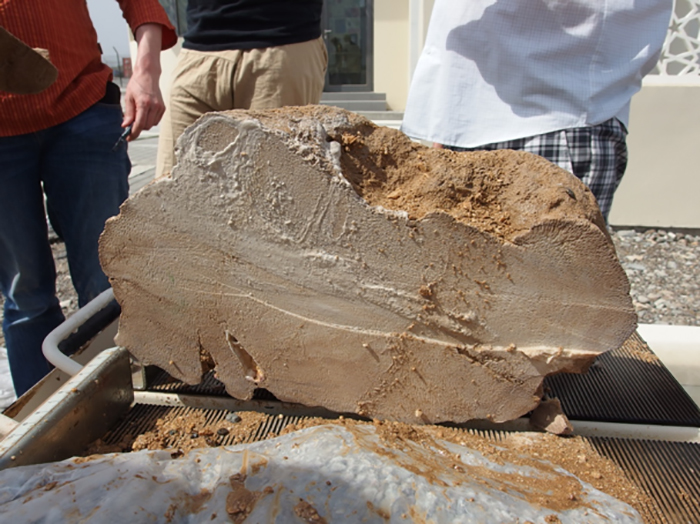Empires can fall for all kinds of reasons – invasion, over-expansion, corruption, economic troubles, climate change – but new research suggests the Akkadian Empire may have been brought low by a more unusual cause: dust storms.
Flourishing during the Bronze Age (from the 24th to the 22nd century BCE), the Akkadian Empire was based around the city of Akkad in ancient Mesopotamia, bringing several cities together under one ruler. It dominated the region for hundreds of years – right up until it didn't.
Now a new study, based on a geochemical analysis of six 4,100-year-old Porites coral fossils, adds some extra detail to that sudden demise. It also acts as a timely reminder of the devastating effects that environmental changes can have – even to well-established and dominant civilisations.
 One of the examined fossils. (Hokkaido University)
One of the examined fossils. (Hokkaido University)
"Although the official mark of the collapse of the Akkadian Empire is the invasion of Mesopotamia by other populations, our fossil samples are windows in time showing that variations in climate significantly contributed to the empire's decline," says environmental scientist Tsuyoshi Watanabe from Hokkaido University in Japan.
"Further interdisciplinary research will help improve our understanding of connections between climate changes and human societies in the past."
Studies of the coral fossils from the site at Tell Leilan in northeastern Syria (once the centre of the Akkadian Empire) showed sudden and intense dry spells around the time of the empire's demise, as well as evidence of frequent shamals – strong winds associated with dust storms in the Persian Gulf.
The fossils also revealed an extended winter shamal season around the time of the break-up of the Akkadian dynasty around 4,200 years ago. Add those meteorological conditions together, and a harsh environment for growing crops appears, one that most likely lead to civil unrest.
Drought and societal collapse have already been identified as potential reasons for the abrupt end of the Akkadian Empire, as well as invasions from other peoples, but this new study adds some useful detail to this period in history.
We might never know exactly what happened right at the end of the rule of the Akkadians, but these fossils offer up some fascinating clues – preserving the climate conditions of the past, stretching back thousands of years. Scientists can make similar judgments from ice cores and even tree rings.
All of which means a greater insight not just into the past, but into the changing climate conditions today. Just like the Akkadians, we're finding extreme weather conditions becoming more frequent, and causing certain regions to become more inhospitable.
In the case of this particular part of Mesopotamia, it would take hundreds of years before people would settle here again – a warning to us from the past.
"The abrupt intensification of surface winds would have caused aridification during winter in the Mesopotamia region, where the winter season is critical for agriculture today," conclude the researchers in their paper.
The research has been published in Geology.
